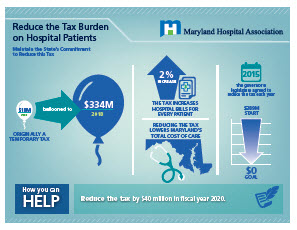Surgical Treatment May Be Needed To Treat The List Below Types Of Hernias:

Content By-Gentry Sullivan
* Inguinal rupture: A protrusion of tissue via a damaged location in the stomach wall surface, typically on one side of the groin.
* Hiatal hernia: An outcropping of the stomach through the diaphragm and right into the upper body tooth cavity.
* Umbilical hernia: A bulge near the stomach button that takes place when a damaged area in the stomach wall surface enables fat or various other tissue to push through.
* Forward rupture: A bulge that takes place when a damaged location in the abdominal wall surface enables fat or various other tissue to push through, usually near a previous surgical incision.
* Incisional hernia: A bulge that takes place when a weakened area in the stomach wall surface permits fat or other tissue to push through, frequently near a previous medical incision.
It is very important to note that not all hernias call for surgical treatment, however these kinds do. If you presume you have a rupture, it is necessary to get in touch with a healthcare expert for appropriate medical diagnosis and therapy.
So, you've been experiencing some discomfort recently, and after a comprehensive evaluation, your doctor has established that you have a hernia. Now, before you begin stressing, it is very important to understand that not all hernias require surgical treatment.
Nonetheless, there are specific types that do, and that's what we're here to review. From inguinal hernias to umbilical ruptures and even hiatal hernias, each one offers its own one-of-a-kind difficulties and considerations.
Yet let's not be successful of ourselves just yet. We'll study the specifics quickly enough.
Inguinal Ruptures
If you're experiencing pain and pain in your groin location, you might have an inguinal rupture that requires medical intervention. An inguinal hernia occurs when a part of the intestine or fat pushes via a vulnerable point in the inguinal canal, which is located in the lower abdomen.
This type of rupture is much more typical in males than females and can be triggered by variables such as heavy training, straining during bowel movements, or persistent coughing. Signs and symptoms of an inguinal rupture consist of a bulge in the groin location, pain or pain when coughing or lifting, and a feeling of stress or weakness in the groin.
If left untreated, an inguinal rupture can lead to complications such as bowel blockage or strangulation, which is why surgical intervention is required to repair the rupture and prevent additional problems.
Umbilical Ruptures
Do you know what an umbilical hernia is and how it can be treated surgically?
An umbilical rupture takes place when a part of the intestine or stomach cells protrudes through a weak spot in the stomach wall surface near the stomach button.
If you have an umbilical hernia that requires medical treatment, here are 3 therapy alternatives to consider:
- Hernia repair service surgery: This is one of the most common treatment for umbilical ruptures. Throughout linked here , the cosmetic surgeon will certainly make a laceration near the rupture and push the extending tissue back right into location. They'll then enhance the abdominal wall utilizing stitches or a mesh patch.
- Laparoscopic surgical procedure: Sometimes, a minimally invasive approach called laparoscopic surgery might be used. This strategy includes making small incisions and using a cam and specialized tools to fix the rupture.
- Open surgery: In more intricate cases, open surgical procedure may be needed. This entails making a bigger laceration to accessibility and repair the hernia.
Hiatal Hernias
A hiatal hernia happens when part of the tummy sticks out with the diaphragm into the upper body cavity. This kind of rupture is fairly common and typically requires surgical intervention.
Hiatal ruptures can be categorized into 2 primary kinds: gliding and paraesophageal hernias. Gliding ruptures are the most typical and happen when the lower part of the esophagus and the top of the belly slide up right into the chest via the respite, a little opening in the diaphragm.
On the other hand, paraesophageal hernias are less typical however a lot more extreme. In just click the next webpage , a part of the stomach presses through the respite alongside the esophagus, creating potential difficulties like stomach volvulus or strangulation.
Surgical repair work is generally necessary to treat hiatal ruptures and ease symptoms such as heartburn, upper body discomfort, and difficulty swallowing.
Verdict
So there you have it, the different sorts of hernias that call for medical treatment.
One instance of a rupture instance that needed surgical treatment is John, a 45-year-old male who suffered from an inguinal rupture. Regardless of his initial pain and apprehension, John opted for medical treatment.
The treatment achieved success, and he experienced a full recuperation, enabling him to go back to his typical activities without any additional issues.
Bear in mind, it is essential to consult with a healthcare professional if you think you may have a hernia that needs surgical treatment.

